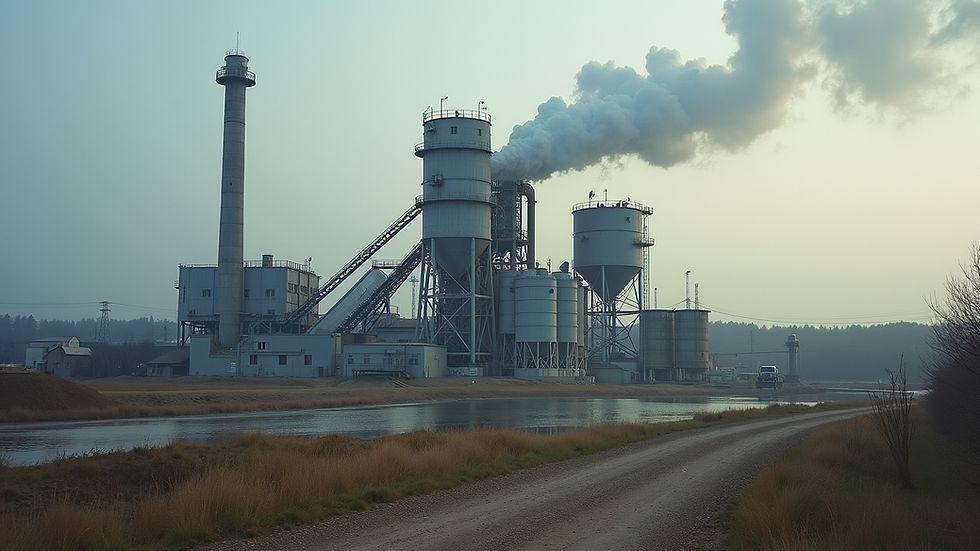Exploring High-Grade Coal and Its Industrial Benefits
- Brandcodax

- May 5
- 4 min read
High-grade coal, specifically anthracite coal, has been an essential fuel source in various industries for decades. With its high carbon content and low impurities, anthracite coal serves as a crucial component in energy production, metallurgy, and heating. This blog post will delve into what high-grade coal is, its industrial applications, the reasons it’s not always used, and the future prospects of this valuable resource.
What is High-Grade Coal?
High-grade coal, often referred to as hard coal, primarily includes anthracite, which is the highest rank of coal. It is characterized by its shiny appearance, high energy content, and low sulfur and ash content. This coal type has a carbon content of 86% or more, leading to fewer emissions when burned compared to lower-grade coals.
Anthracite coal is used extensively in residential heating systems and industrial applications, such as steel manufacturing. It's efficient for burning, yielding a high heat output, which makes it an attractive energy source.

The Industrial Benefits of High-Grade Coal
Energy Production: High-grade coal’s high carbon content makes it an excellent fuel source for generating electricity. Power plants harness its energy to provide consistent electrical power. According to the U.S. Energy Information Administration, coal accounted for about 23% of the electricity generation in 2020.
Metallurgical Processes: In the production of steel, anthracite coal acts as both a fuel and a reducing agent. Its low impurities enable the production of higher-quality steel, essential for constructing buildings, vehicles, and machinery. The steel industry, in turn, generates significant economic activity and job opportunities.
Residential Heating: Many homeowners rely on anthracite coal for heating, especially in colder climates. Its efficient burning properties make it popular in stoves and furnaces, providing warmth during winter months. Additionally, with the rise of eco-friendly practices, people are revisiting coal as a cleaner alternative to traditional heating fuels.
Chemical Industry Uses: Anthracite coal is utilized in the production of various chemicals, including carbon black, which is crucial for rubber production and other applications. It's also a source of activated carbon used in air and water purification.
Coking Process: In the coking process, anthracite coal is heated in the absence of air to create coke, a material critical for iron ore smelting. The coking process yields high-quality coke that significantly contributes to the efficiency of iron and steel production.

Why Don't We Use Anthracite Coal?
Despite its numerous benefits, the use of anthracite coal is declining in some regions. Here are several factors contributing to this issue:
Environmental Concerns: The burning of any fossil fuel emits greenhouse gases, leading to climate change. Although anthracite produces fewer emissions than other coal types, it still contributes to air pollution.
Alternative Energy Sources: The rise of renewable energies, such as solar and wind, has led to a decline in coal usage. These alternative sources of energy are being favored due to their lower environmental impact. The transition is becoming more prevalent, with many countries pledging to reduce their fossil fuel dependence.
Cost Factors: While anthracite coal itself may be inexpensive, the infrastructure necessary for its extraction and transportation can be expensive. Additionally, as demand decreases, production costs can rise, creating a less favorable market landscape.
Regulatory Pressures: Governments worldwide are implementing stricter regulations on emissions. These regulations can make it more challenging for coal-fired power plants to operate, pushing them to adopt cleaner energy solutions.
Opportunities for High-Grade Coal in the Future
The future isn't entirely bleak for high-grade coal. Several opportunities could resurrect its usage:
Technological Advancements: Continued research into cleaner coal technologies has the potential to minimize emissions from burning coal. Carbon capture and storage (CCS) is one such technology that could enable the continued use of coal while mitigating environmental impacts.
Emerging Markets: Countries in developing regions still rely heavily on coal for energy production. In these markets, the demand for anthracite coal is expected to remain stable or even grow, led by industrialization and urbanization trends.
Cultural Reassessment: As energy costs rise, more consumers may look back at anthracite coal as an efficient heating source. With the right marketing and education on environmental benefits, a resurgence in its popularity could occur.
Circular Economy Inclusion: Incorporating high-grade coal into a circular economy could help promote its sustainable use. Industries using or producing it can find ways to recycle waste materials, thus minimizing the need for new coal extraction.

Final Thoughts
High-grade coal, particularly anthracite, possesses unique industrial advantages that are hard to overlook. Its applications in energy production, steel manufacturing, and various chemical processes emphasize its importance in modern industry. Although challenges, such as environmental concerns and competition from renewable energy sources, exist, advances in technology and market dynamics could pave the way for renewed interest in this high-grade resource.
If you are interested in sourcing high-quality anthracite, consider reaching out to an anthracite coal supplier who can provide you with reliable products. The future of high-grade coal may depend on adapting to new trends while utilizing its proven benefits across various industries.





